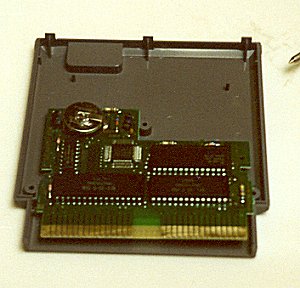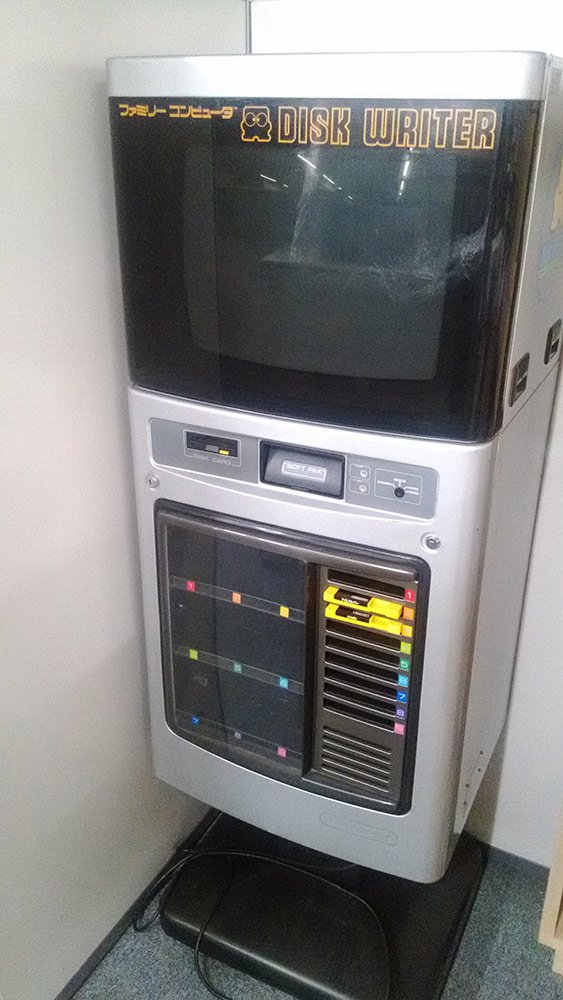What the hell is the Famicom Disk System?
When, why and how it came, these and more questions will be answered in this review,
let’s go!
The Famicom Disk System or FDS, for the most intimate, was a peripheral created by Nintendo and released only in Japan, in 21th February 1986, for the Japanese version of the NES, the Famicom.
As the name already says, the main media
format are floppy disks, similar to the same ones that were used on computers
from the 80’s and 90’s.
They served to replace for a short period of time the cartridges (The main media format of the Famicom), especially due to a bigger capacity, as the peripheral’s floppy disks could store up to 112 kilobytes of memory, different from the 20 until 80 from the cartridge.
Practically all games of this peripheral, due to the big memory inside the floppy disk, obliged the player to take out the floppy disk and change the side of it. The Famicom Disk System’s sides were named A and B.
Although this is an innovative technology for the time, the floppy disks showed some disadvantages in relation to the cartridges like, for example, a time that a floppy takes to load, depending of the conservation of the game. And in relation to conservation, the FDS floppy disks were fragile, because of a metal board, that was responsible for transferring information to the peripheral, could be easily damaged, than spoiling the game’s floppy disk.
The peripheral was connected to the console through a special cartridge called RAM adapter, in the console’s cartridge slot.
The accessory had in total 32 kilobytes of RAM, in which 8 were in charge of taking care of the sprites and tiles database, also containing an integrated circuit known as 2C33, that contained a sound hardware capable to produce a sound synthesis that, in short, applies periodic wave shapes in the console’s media system. This is why the games, including the Japanese versions of the ones that got released in US, have a “clean” sound. To a better and more immersive understanding, there is a comparison between the Japanese and American versions of the first game of the “Legend of Zelda” series below:
In discrepancy with what was told earlier,
one of the biggest advantages if not the biggest advantage was the possibility of
saving your progress inside the game, in a time you needed to beat a whole game
in a single row! This innovation was also brought to the Western but through a
little battery inside the cartridges, that was in charge of saving the progress
in the games. Examples of NES game that used this technology are the first two
games of the “Legend of Zelda” series. You could also load progress in the
games of Western through passwords. Examples of NES games that used this were
the second and third games of “Castlevania” series.
Without doubt, one of the most practical and genial things that Nintendo created at the time were the Disk Writer kiosks, where were necessary to pay out only U$ 3,25 to write a game in a floppy disk made to the accessory, instead of paying U$ 17,00 in a new game, that is more than the double of the price!
But in the yellow diskettes were possible to
write only one game on them, but the blue diskette allowed how many times you
wanted, write games on it.
And on top of that, there were tournaments
where who made the biggest number of points, would win a prize disputed in the
tournament, like two golden versions of two golf games and even a golden
version of “Punch-Out”, extremely rare today.
Even not making too much success, the
Famicom Disk System was a great accessory, even getting, as a form of tribute
to the peripheral, the startup music hidden inside the Gamecube’s menu, but in a
much slower speed.
Coming to the end of this post, I hope you
liked the content I brought here in this blog and also hope to give even more
interesting content in the blog. See you later!







No comments:
Post a Comment